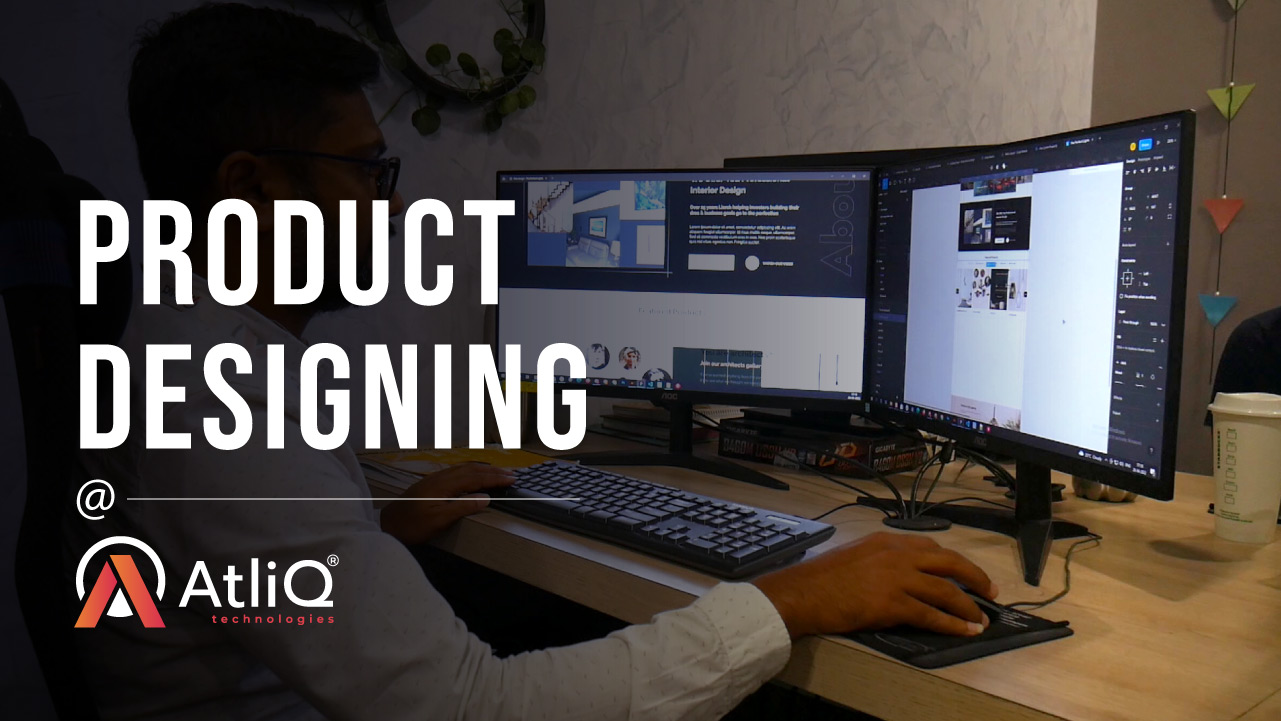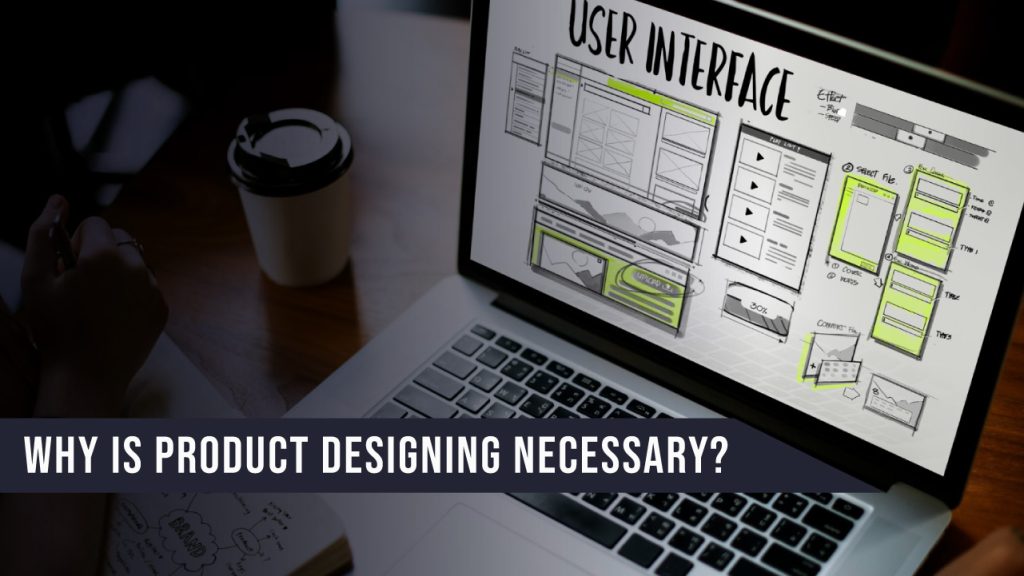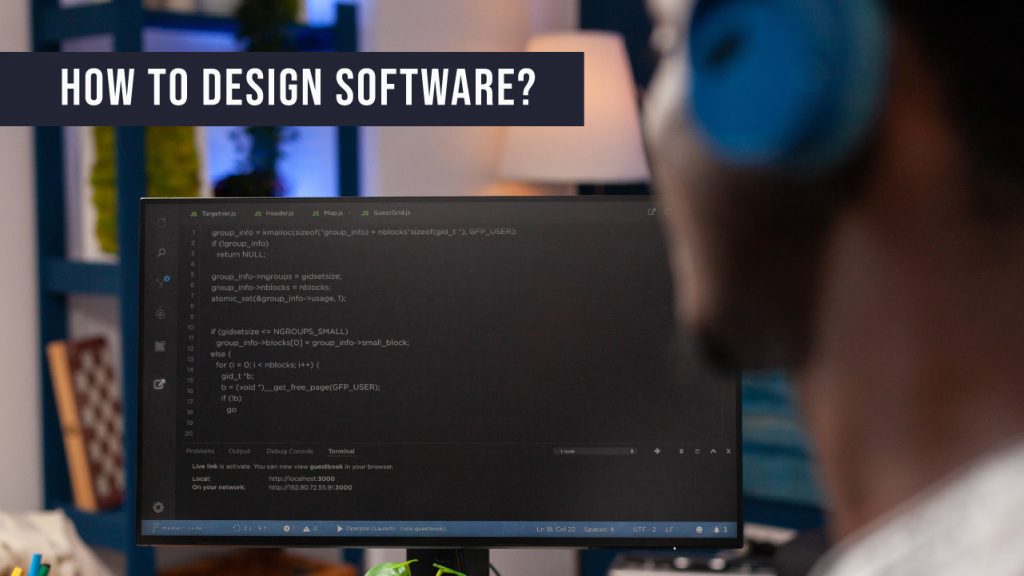Product Designing @ AtliQ

Do you remember the time when you tried your favorite snack for the first time? What was the most appealing thing that pushed you towards that choice?
The super cool design, right? Surely, some funky color or creative animation would have caught your eye.
Product designing makes sure that you convey the right message of your brand, to the end-user. Today, you could be walking in the supermarket and notice that you are surrounded by thousands of products. But the first impression that pushes the user to buy your product depends on the design.
Similar is the software case. Software gains a reputation because of its elegant design and smooth functionality. Good software has a clear and unique design that helps the brand in establishing its identity and credibility. Software design not only reflects the UI designer’s thought process behind the aesthetics but also makes the product discoverable. Moreover, the UX designers make sure that your software is interactive and smooth. Good designs not only complement the functionality but also excite the user to use the service. At Atliq, we have always prioritized a software’s design, just like other essential elements that make it market-ready.
But why is product designing necessary? What value does it bring to the table? How can it help you as a business?
Why is Product Designing Necessary?

Product design decides the success of your product. It is essential for providing businesses with end-to-end solutions and differentiating your brand. A beautiful software design will also impact your brand value positively. We believe that some products perform better than others due to their creative designs. There are several essential benefits of product designing.
- Product designing helps in creating a product roadmap. During the designing process, every member needs to be on the same page. The roadmap is useful to keep the expectations of all the parties clear.
- The process also helps in defining the product goals and its scope for the marketplace. Moreover, they also clarify the product offerings, which is essential in deciding its success.
- It is also helpful in solidifying all the essential features in the software. It improves the user experience. An impressive design makes your software interactive and attractive.
- Product designing is also necessary for aligning the identity of your brand with that of the product. It ensures consistency across all visual designs of your brand.
- Lastly, product designing also caters to the different needs of different customers. Product designing offers a systematic approach to dealing with the varying demands of consumers.
We know the value of product designing in software. But we still don’t know the different steps involved in the designing process. Let’s dive into the process.
How to Design Software?

The designing process is essential for software, as it helps the product stand out from the crowd. As a product designer, your priority should be to innovate and visualize a functional and memorable design. A memorable design will leave a long-lasting impression in the user’s mind. That will also help you in increasing your sales.
Product designing can be quite complex and tiring. Streamlining and finding a single process that suits all the conditions can also be a headache. Offering a great UI and UX experience not only improves the software lifecycle but also improves its performance. AtliQ has a defined approach to this. Our product designing process has helped businesses achieve extraordinary goals.
We believe that there are several important success determinants in the process of designing software. Let’s take a look at all the steps involved.
The first step involves the visualization of the software that you need to deliver. It’s a primitive design, and it can include rough sketches that help the team in having clarity regarding the output.
Once the product vision is clear, we move on to wireframing. Wireframes are two-dimensional visual representations of the software, that allow all the parties to get familiar with the software.
The next step includes working on Low-level design (LLD). Low-level designs are minimalistic and offer a broader picture of the software. LLD includes the essential components of the User Interface (UI).
Next up, we have the High-level design (HLD). High-level designs represent the final product. HLD denotes all the features and functions that the final project has. HLD requires the most time, and they are often called macro-level designs. LLD and HLD are important factors in the Software Development Life Cycle (SDLC).
These are all the steps involved in product designing. The key members involved in the designing process, such as the product designer, product manager, solution architect, etc., are always in sync with each other. At AtliQ, we noticed that team meetings in fixed time intervals have helped the client as well as the team in keeping a track of the progress.
Product designing not only makes software visually appealing but also helps you gauge the user’s expectations. Both UI and UX designs contribute to the final product. An attractive design might still receive poor feedback due to the clumsy user experience that your software offers. On the contrary, you might have an interactive, fluid user experience. But your software might not attract customers due to a bland choice of colors.
To attract customers, you’d want the software to have a maintainable, catchy, and efficient design. Make sure that your team is on their toes. If not, come contact us! Our team is skilled in such designing projects, and they are always ready to add more value to your business!




